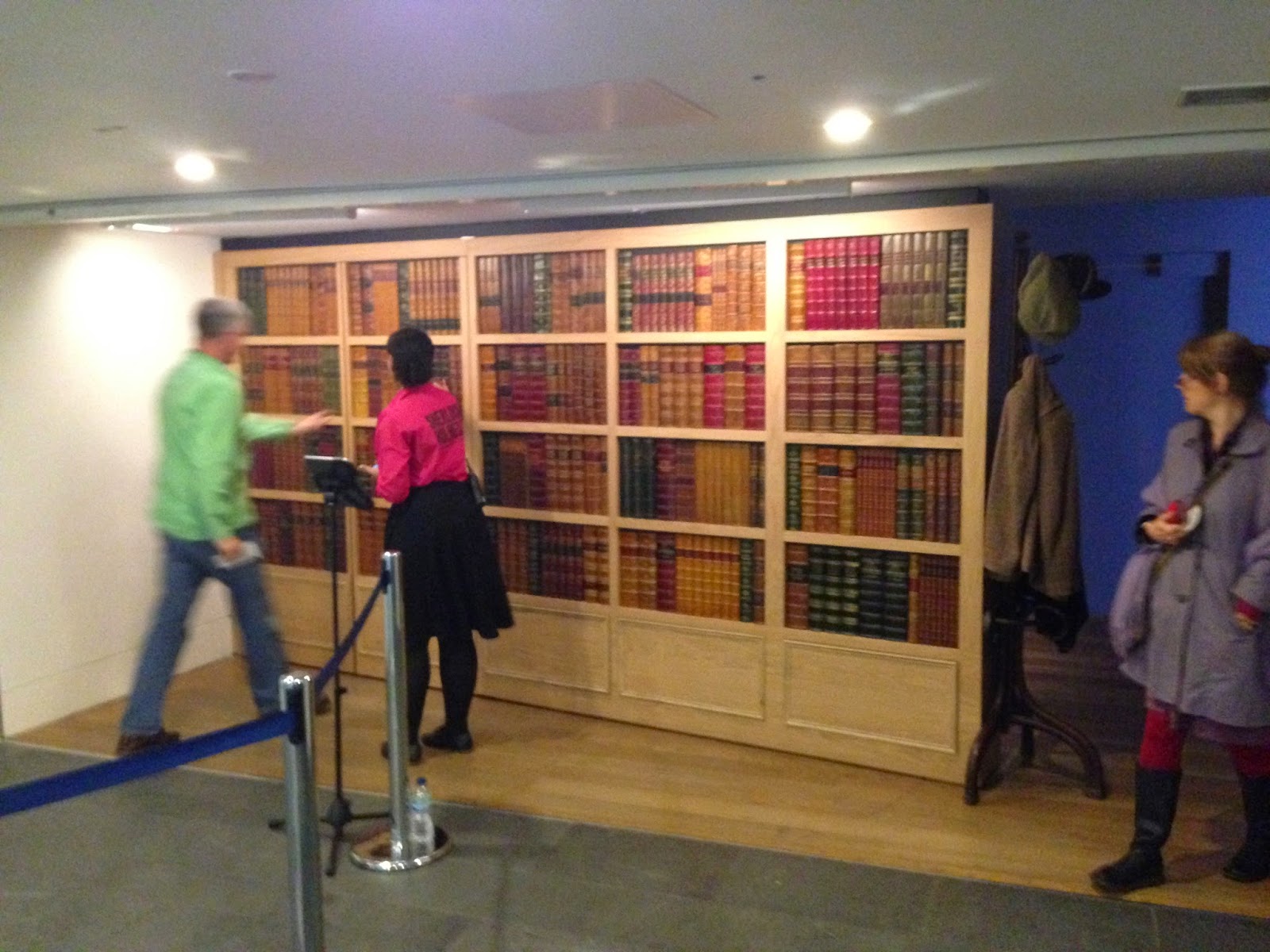The entrance to the exhibition starts with you pushing a book shelf, which appears to be a hidden door. The first room is filled with screens and posters. The ambient light is very weak. Some of the photos were enlarged to become a wallpaper. I loved the idea of taking the visitors through the routs that Sherlock takes in different books, but the city that visitors see is London in 2014 (a modern interpretation) As if showing how would it had looked like it Sherlock lived nowadays. Videos, posters, old photos, books, oils paintings, sketches, clothes, objects are building the gallery experience. The last room is filled with objects. In one of the stands, it is allowed to interact with a detective story by examining stains on fabrics. A glass "island" in the middle - a place where the clothing is displayed. Nothing is attached to the walls, the photos hung on 2 metal wires from the top of the show box. The last work, attracted my attention. It is my favourite part of the whole exhibition. On a huge screen a video of waterfalls and wild rivers is shown. The book is read by a male voice, the sound travels through the room. The whole experience is very intimate, the voice whispers the story in your years. The whispers were so gentle, while the image of the waterfall is very violent and disturbing. I loved this concoction of danger and secret. The water in dangerous, it showed the "place" where Sherlock and Moriarty had a fight before they both jumped into a wild cold river.
The entrance to the Exhibition
People's perception of the exhibition
I have chosen two italian middle-aged women and a group of three asian young people to follow through the exhibition.
I will start with with two women. One of them did not understand english. When they entered the exhibition space, they touched the wall as it looked like a bookshelf but with fake books. They always spent a lot of time near the general information boards, lively discussing something in italian. They payed no attention on videos, dropped a quick look on posters and moved to another general information board. They did not read any descriptions or text below artefacts. Then they tried to read a handwriting of the author, gave up and started to move slowly through the 3rd room, paying a vague attention on photos and pictures, they talked a lot. A table with post cards interested them. Then they examined carefully the drawings on which the famous London fog was depicted. They watched a short video, read a general information in the last room and stayed in that room for quite a while. The room was filled with objects and clothing. From their experience of the museum I concluded that they were not very interested in the drawings or old photos, they loved to look at objects. A general information was more than enough for them.
The group of young asian people spent a lot of time looking at the posters. In the 3rd room they spent a lot of time examining the maps of London. They were not interested in the old photos or any writing, but the drawings and the paintings. In the last room the group felt apart and went to examine the space separately.
A drawing of a 19th century London attracted a group of old english ladies. They had a very lively conversation about how the face of the city changed over a century. They shared their memories of a city when they were young. I found it very touching.
Presentation of a permanent collection of Museum of London.
The timeline of the most important events and people cover the whole wall from floor to the ceiling. The scale of the portraits and clarity of the presentation is striking.
A photo of the modern London is placed on the walls, from floor the ceiling, It is illuminated. Collections are divided on several groups and each collection is visually divided from the other by this kind of huge thematical photos or images.





No comments:
Post a Comment